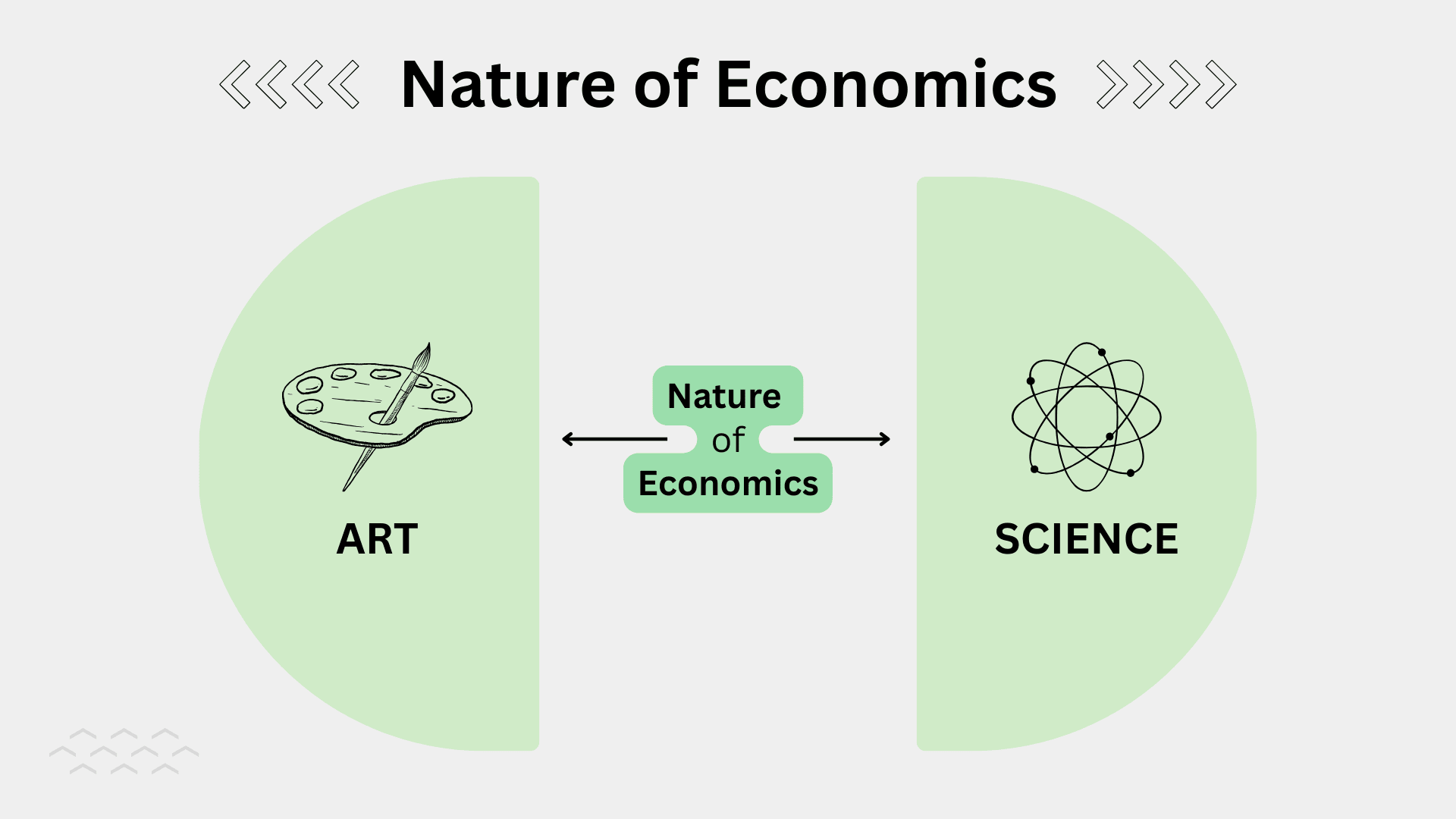The Nature of Economics: Art or Science
Economics is a multifaceted discipline that explores how individuals, households, firms, industries, and governments make decisions regarding the allocation of limited resources to maximize gain or satisfaction. It deals with the fundamental problem of scarcity and the necessity of making choices among competing uses for these resources.
Economics as a Science
- Definition of Science:
- Science is an organized body of knowledge that focuses on understanding cause-and-effect relationships among variables. It uses systematic methods to observe, measure, and analyze phenomena to establish general principles or laws.
- Economics as a Positive Science:
- Positive Economics: This branch of economics is concerned with describing and explaining economic phenomena without making any judgments about them. It deals with objective analysis and facts, focusing on “what is.”
- Example: Positive economics might study the relationship between the price of a commodity and the quantity demanded, providing empirical data and statistical analyses to explain how changes in price affect demand.
- Characteristics: Objective, fact-based, descriptive, and relies on empirical evidence.
- Positive Economics: This branch of economics is concerned with describing and explaining economic phenomena without making any judgments about them. It deals with objective analysis and facts, focusing on “what is.”
- Economics as a Normative Science:
- Normative Economics: This branch involves value judgments and prescribes policies to achieve desirable economic outcomes. It deals with “what ought to be.”
- Example: Normative economics might analyze the fairness of a tax system and suggest reforms to improve equity and efficiency.
- Characteristics: Subjective, value-based, prescriptive, and concerned with economic goals and policy recommendations.
- Normative Economics: This branch involves value judgments and prescribes policies to achieve desirable economic outcomes. It deals with “what ought to be.”
- Integration with Other Sciences:
- Economics often integrates tools and methods from other sciences such as mathematics and statistics to analyze economic relationships and test hypotheses.
- Example: Econometric models use statistical techniques to estimate the relationships between economic variables, providing a scientific basis for economic forecasting and policy evaluation.
- Economics often integrates tools and methods from other sciences such as mathematics and statistics to analyze economic relationships and test hypotheses.
Economics as an Art
- Definition of Art:
- Art is a discipline that focuses on the application of knowledge to achieve desired outcomes. It involves skillful practice and the application of theoretical principles to solve practical problems.
- Economics in Practice:
- Application of Principles: Economics provides general rules and principles that guide decision-making in real-world scenarios. This practical aspect of economics is what makes it an art.
- Example: Businesses use economic principles to determine pricing strategies, optimize production processes, and forecast market trends.
- Characteristics: Practical, skill-based, prescriptive, and focused on achieving specific objectives.
- Application of Principles: Economics provides general rules and principles that guide decision-making in real-world scenarios. This practical aspect of economics is what makes it an art.
- Branches of Economics:
- Economics encompasses various branches such as production, distribution, and consumption. Each of these areas applies economic principles to solve specific problems.
- Production Economics: Deals with how goods and services are created, focusing on the efficient use of resources.
- Distribution Economics: Examines how income and wealth are distributed among different members of society.
- Consumption Economics: Studies how individuals and households decide to spend their income on goods and services.
- These branches illustrate the practical application of economic theory to address societal issues and improve economic outcomes.
- Economics encompasses various branches such as production, distribution, and consumption. Each of these areas applies economic principles to solve specific problems.
Economics as Both Science and Art
- Dual Nature:
- Economics is often considered both a science and an art. As a science, it uses rigorous methodologies to understand and explain economic phenomena. As an art, it applies these scientific insights to solve practical problems and achieve desired goals.
- Theoretical and Practical Aspects:
- Theoretical Aspect: Involves the development and testing of economic theories and models to understand the behavior of economic agents.
- Practical Aspect: Involves the application of these theories to make informed decisions and craft policies that address real-world economic challenges.
- Example of Dual Nature:
- Theoretical: An economist might develop a model to predict how interest rate changes will affect investment behavior.
- Practical: Policymakers use these models to design monetary policies that stabilize the economy and promote growth.
Conclusion
Economics straddles the line between science and art. As a science, it seeks to objectively understand economic phenomena through empirical research and theoretical modeling. As an art, it applies this knowledge to solve practical problems, guide decision-making, and shape policies that improve societal welfare. This dual nature makes economics a dynamic and versatile discipline, crucial for addressing the complex challenges of modern economies.
